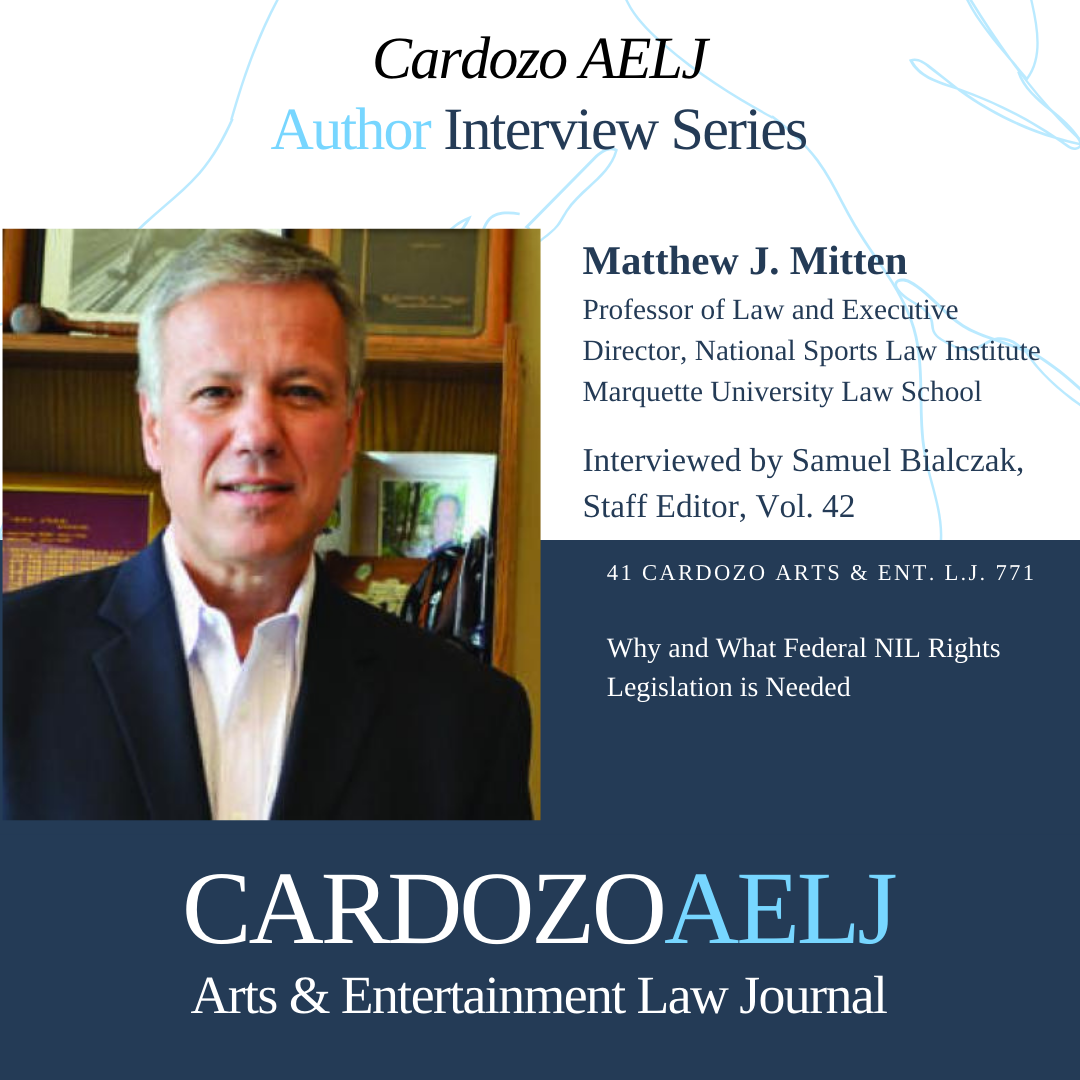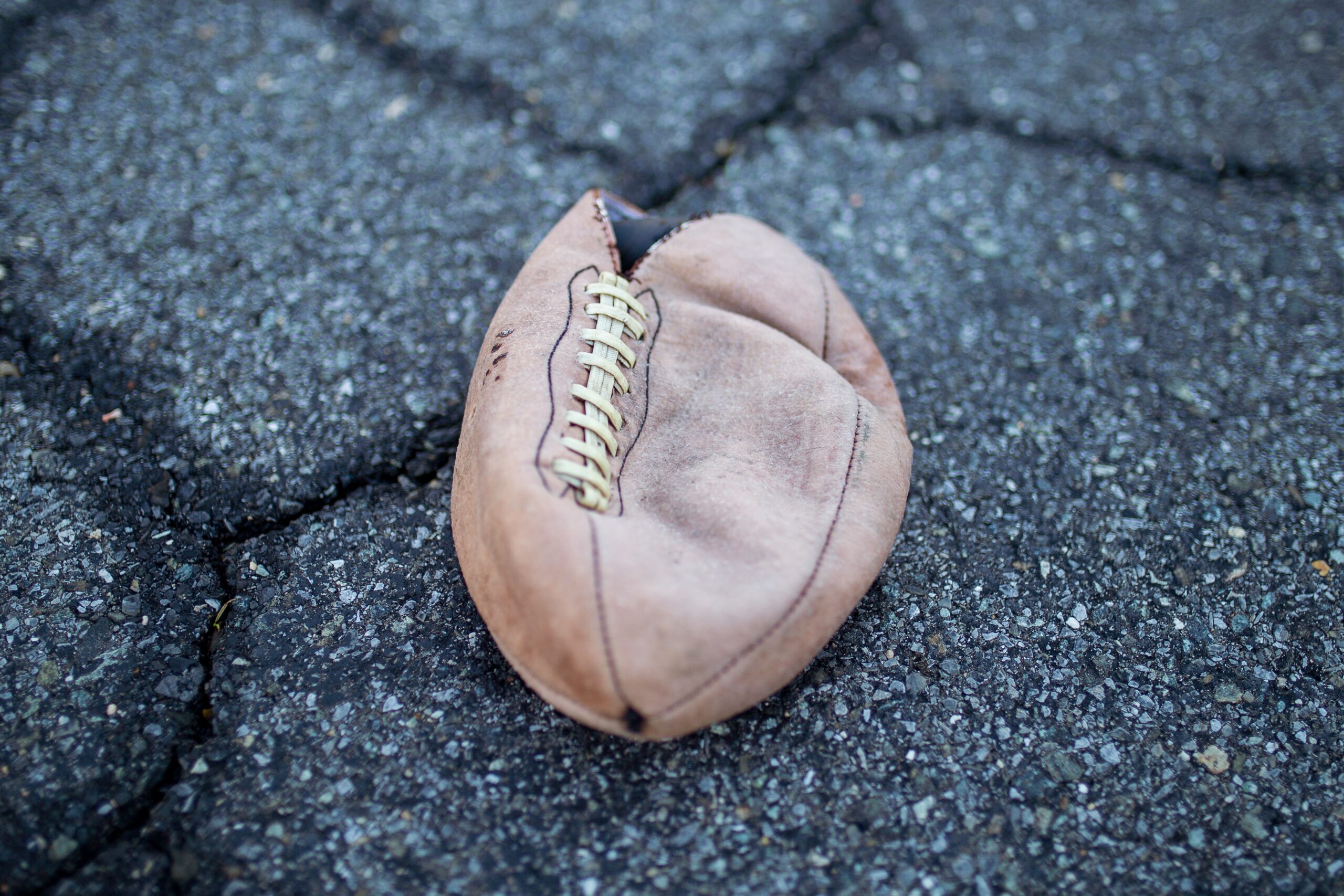The right of publicity provides protection to an individual and prevents another individual or corporation from exploiting their identity or likeness for commercial gain without first securing permission.[1] However, this protection is seemingly non-existent for college athletes and the NCAA does little to help. It has been well established that college athletes cannot be compensated or paid for any use of their name, image, or likeness.[2] In fact, most university programs require athletes to sign waivers forfeiting any claims to their individual publicity rights while the universities themselves earn billions of dollars a year in television rights and merchandise sales.[3] The NCAA has responded to criticism and contends that college athletes are effectively trading their rights of publicity in exchange for their scholarship to play for their respective universities.[4] In the case of O’Bannon v. NCAA, a former UCLA basketball player filed a class action lawsuit alleging that the NCAA had violated United States antitrust laws and student-athletes’ personal rights of publicity.[5] Ultimately, the Court held that the NCAA did violate federal antitrust law but claimed that universities only need to provide collegiate athletes with compensation equal to the cost of attendance.[6] In October 2016, the Supreme Court of the United States denied a writ of Certiorari to review the case; thus affirming the decision of the Ninth Circuit.[7]
One of the central arguments in Mr. O’Bannon’s suit was the assertion that the NCAA violated the Sherman Antitrust Act and unlawfully restricted trade by failing to compensate student-athletes for their publicity rights.[8] In 2009, Ed O’Bannon brought an action against the NCAA for his depiction in a college basketball video game. An avatar of a UCLA basketball player in the game wore his same jersey number, played his same position, and had a very similar appearance to Mr. O’Bannon.[9] Even though his name was never explicitly used, it was evident that the player in the video game was modelled after O’Bannon and was intended to be a virtual representation of him during his career at UCLA. The Court eventually ruled that the NCAA violated antitrust laws by barring payments to student-athletes but also failed to uphold a ruling that colleges be permitted to compensate each athlete up to $5,000.00 per year of eligibility.[10] Instead of making cash payments to athletes, the Court ruled that the NCAA should be permitted to provide student-athletes with compensation for the cost of attendance and any associated costs they would incur by attending the university.[11] The denial of Certiorari by the Supreme Court of the United States has since affirmed the ruling of the Ninth Circuit.
Another recent case, Marshall v. ESPN, was a class-action complaint launched by Javon Marshall (a Vanderbilt football player) and several other college football and basketball players alleging that ESPN had violated their individual publicity rights.[12] The Plaintiffs assert that any of the ESPN broadcasts of college sporting events are illegal unless each player on each team grants a license to use their likeness.[13] Ultimately, the Sixth Circuit Court of the U.S. Court of Appeals ruled against the Plaintiffs and rejected the right of publicity claim on several grounds.[14] When a student-athlete agrees to participate or play in a game, they are seemingly consenting to being on a television broadcast and cannot bring a claim for violation of their publicity rights. By this logic, participation is an effective waiver of a publicity right and thus bars student-athletes from bringing a claim. Additionally, the Court rejected the Plaintiffs’ claims that use of their likeness in a broadcast would be linked to a false endorsement.[15] This ruling is valid as it is not logical to assume that simply because there is an advertisement promoting a product on the broadcast, that each student-athlete would support such product.[16] The stark contrast between the opinion of the Court in Marshall and that of O’Bannon can largely be attributed to the forum in which the action was initiated. In Tennessee, statutory law holds that “the use of a name, photograph, or license” in connection with a “sports broadcast or account” cannot afford any publicity rights to individuals.[17]
As such, if the Plaintiffs had chosen a different forum state that does not have statutory language governing publicity rights, they would have had a much greater chance at success. Marshall illustrates the potential speed-bumps to future litigation as states have different policies and statutes governing publicity rights afforded to individuals. If student-athletes are to be afforded greater control over the use of their name, likeness and appearance, change would have to come on a federal level. This makes the Supreme Court’s recent denial of Certiorari in O’Bannon much more frustrating for the thousands of student-athletes throughout the United States. Until a Supreme Court decision or a federal statute effectively addresses the issue of student-athlete publicity rights, there is little to no possibility of change in the reign of the NCAA.
John J. Cregan III is a second year student at Benjamin N. Cardozo School of Law and a Staff Editor of the Cardozo Arts & Entertainment Law Journal. He is interested in pursuing a career in entertainment law with a focus on music and sports. As both a long-time athlete and a professional music producer, learning more about the legal landscape of the entertainment business is of particular interest to John.
[1] Ryan Sullivan, An Athlete’s Right of Publicity – An Active Area in Sports Law, Heitner Legal (June 12, 2015), hhttp://heitnerlegal.com/2015/06/12/an-athletes-right-of-publicity-an-active-area-in-sport-law/.
[2] John Keilman and Jared S. Hopkins, College Athletes Routinely Sign Away Rights to be Paid for Names, Images, Chicago Tribune (March 26, 2015), http://www.chicagotribune.com/sports/college/ct-ncaa-waivers-met-20150326-story.html.
[3] Id.
[4] Sullivan, supra note 1.
[5] O’Bannon v. NCAA, 802 F.3d 1049 (9th Cir. 2015).
[6] Id.
[7] Oliver Herzfeld, Athletes in Video Games: Balancing Publicity Rights and the First Amendment, Forbes.com (Sept. 22, 2016), http://www.forbes.com/sites/oliverherzfeld/2016/09/22/athletes-in-video-games-balancing-publicity-rights-and-the-first-amendment/#24c59ad518f1.
[8] Supra note 5, at 1055.
[9] Id.
[10] Supra note 5, at 1079.
[11] Id.
[12]Marshall v. ESPN, 111 F. Supp. 3d 815 (M.D. Tenn. 2015). (The case was subsequently appealed and affirmed in the Sixth Circuit of the U.S. Court of Appeals in 2016).
[13] Id.
[14] Student Athletes Lose Sixth Circuit Appeal in Marshall v. ESPN, Rothman’s Roadmap to the Right of Publicity (Aug. 18, 2016), http://www.rightofpublicityroadmap.com/news-commentary/student-athletes-lose-sixth-circuit-appeal-marshall-v-espn.
[15] Id.
[16] Id.
[17] College Athletes Suffer Legal Setback in Marshall v. ESPN; Is Plaintiffs’ Poor Choice of Forum to Blame?, Go Sport! (Jan. 24, 2016), http://beginsport.blogspot.com/2015/06/college-athletes-suffer-legal-setback.html.


